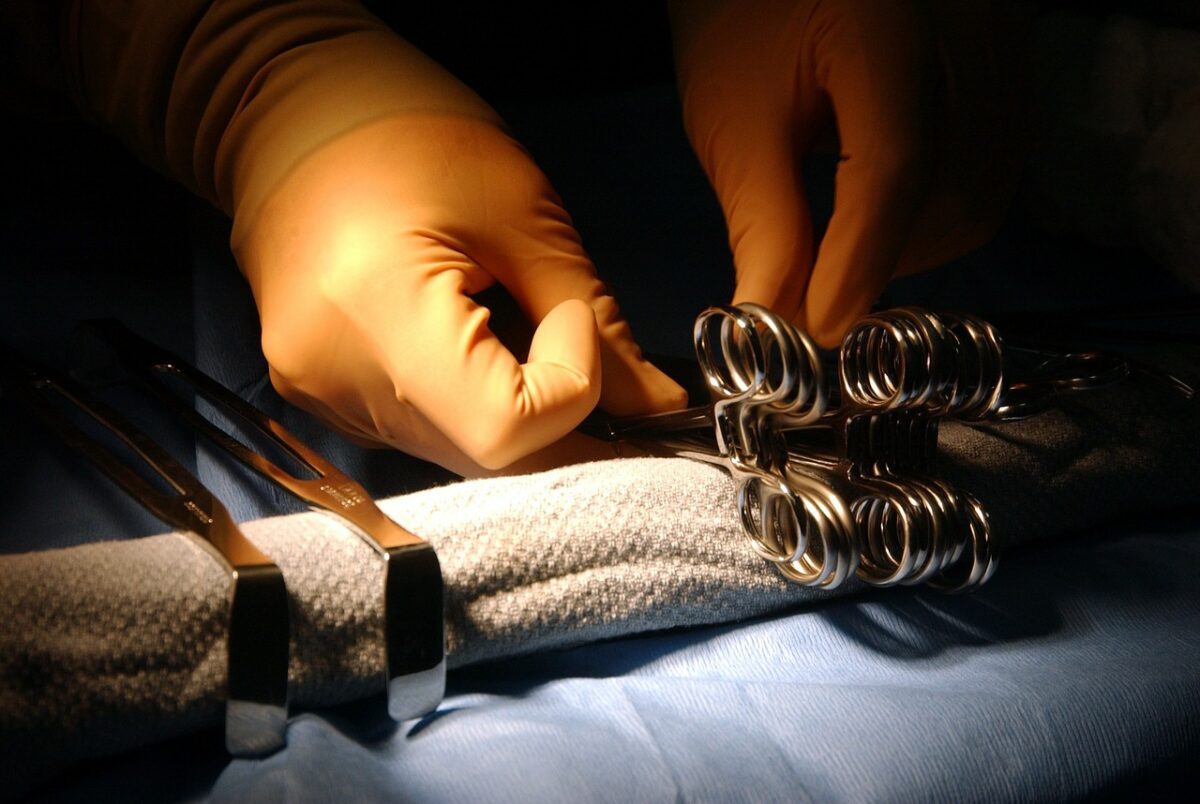Transitioning can involve several distinct procedures. How much gender reassignment surgery costs will depend on what you decide to have done.
Gender reassignment surgery goes by many names: sex reassignment surgery, gender confirmation surgery, top and bottom surgery, or sex change operation. Whatever you call it, it can be wildly expensive.
While not all trans people choose to undergo surgery, for some with gender dysphoria surgery is an absolute must. Many transgender people feel trapped between finally realizing their true selves and not burying themselves in debt.
Thankfully, with new payment plans and a growing number of health insurance companies viewing these procedures as medically necessary, there is more financial support and transition funding options for transgender individuals looking to commit to permanent changes.
What gender reassignment surgery entails
The question of how much gender reassignment surgery costs is a complicated one. For one thing, gender reassignment surgery is not a single, clearly defined plastic surgery. Transitioning can involve several distinct procedures — how much your surgery costs depends on what you have done. The variation between what any two people undergo could mean a difference of as much as tens of thousands of dollars.
Gender reassignment surgery can be broken down into four main categories: the face, the chest, the body, and the genitalia.
- The face alone could involve a dozen surgeries, including rhinoplasty, cheek augmentation, and upper lip reduction or enhancement. Facial feminization or masculinization surgery is quite possibly the most widely variable of all the categories in terms of cost. Furthermore, whether you opt for work on your brow, cheeks, chin, nose, or neck depends on your baseline features.
- The chest is a little more clearly defined. A masculine body transitioning towards feminine will likely get a breast augmentation, while a feminine body transitioning towards masculine will get a mastectomy (breast removal). Either surgery may be accompanied by nipple adjustments.
- The body may involve buttock and hip surgeries to make the waistline more masculine or feminine. It may also involve procedures that are on the periphery of gender reassignment, such as liposuction.
- The genitalia is the most complex and, for some, an essential aspect of their gender reassignment surgery. Genital surgery involves fashioning the existing genitalia to match the targeted genitalia out of existing tissue and tissue grafted from other parts of the body. The process involves some key changes and, sometimes, some à la carte additions, making it almost as variable as facial surgery in terms of cost.
Gender reassignment surgery costs
Here we hit another roadblock to understanding gender reassignment surgery costs: medical facilities rarely make their prices known to the general public. Plastic surgeons specializing in gender reassignment usually request that prospective patients schedule a consultation, during which they can discuss costs on a case-by-case basis.
To make matters worse, many news sources quote overall costs that do not reflect individual needs. For instance, CNN recently reported that individuals could expect to pay as much as or more than $100,000 in total costs. Time Magazine’s website echoes this number. However, the Transgender Law Center says that a phalloplasty (creation of a penis) alone could cost upwards of $100,000.
Thankfully, the Philadelphia Center for Transgender Surgery (PCTS) is up front about their pricing, allowing us to more accurately predict what surgeries might cost. As you read about these prices, keep in mind that other facilities will have their own pricing standards. This is simply an example of what you might expect.
Male-to-female (MTF) surgery costs
- Facial feminization: PCTS lists about a dozen facial feminization procedures. They range from $1,500 for neck liposuction to $8,000 for a facelift. The average price for a single facial surgery is $4,375.
- Breast augmentation: PCTS lists a breast augmentation at $6,500.
- Body and buttock surgery: PCTS charges $4,500 to $5,000 for a buttock augmentation, depending on the procedure type. Other body procedures range from $1,000 for liposuction and $6,200 for an abdominoplasty (tummy tuck).
- Genitalia: PCTS charges $12,600 for a vaginoplasty (creation of a vagina) or $3,500 for an orchiectomy (testicle removal).
Example package and costs:
Let’s say that you decide to get five of the facial feminization surgeries: rhinoplasty ($5,500), a mini-facelift ($5,500), an upper lip reduction ($2,500), and a brow lift ($4,500). That’s a total of $21,000 for the face alone. Now let’s add a breast augmentation ($6,500) and a vaginoplasty ($12,600) for a grand total of $41,000.
Remember that this total amount only factors in a handful of available surgeries, but may also include some options that a trans woman will forgo altogether.
Female-to-male (FTM) surgery costs
- Facial masculinization: PCTS lists about ten facial masculinization procedures ranging from $1,500 for neck liposuction to $8,000 for a facelift. The average price for a single facial surgery is $4,350.
- Mastectomy: PCTS charges $4,000 – $5,500 for a mastectomy, depending on the amount of skin reduction.
- Body and buttock surgery: PCTS lists abdominoplasties at $6,200 and liposuction from $1,000 – $1,500. They don’t specifically recommend buttock surgery for trans men.
- Genitalia: PCTS charges $8,500 for a phalloplasty with a half dozen or so add-ons, ranging from $1,500 for testicular implants to $7,200 for a hydraulic penile implant that simulates an erection.
Example package and costs:
Let’s say you decide to get four of the facial masculinization surgeries: rhinoplasty ($4,500), chin augmentation ($2,500), forehead lift ($4,500), and cheek augmentation ($3,500). That comes to a total of $15,000. Add to that a mastectomy ($5,000), and a phalloplasty ($8,500) with testicular implants ($1,500) and scrotal construction ($3,000). The grand total for these would be $33,000.
As with the other example, this total only factors in a handful of surgeries, but may also include options that a trans man might not choose to undergo.
Hidden costs
Understand that the above prices are for the surgeries alone. They do not include anesthesia or hospital stay. How much you pay for these depends on how long the procedures end up taking, any complications you might have, and how many separate times you need to be anesthetized. For this, add $10,000 – $30,000 additional dollars to the amounts quoted in the examples above.
Non-medical procedures — like Botox and laser hair removal — and hormone therapy also play a role in completing the transition from one gender to the other. Hormone therapy can cost anywhere from $25 to $200 a month. That’s between $300 and $2,400 a year.
What’s more, the counseling involved in preparing for a gender transition (and required by many doctors and insurance companies), can cost between $50 and $200 a session. In short, transitioning is expensive.
If you decide to take the plunge and undergo gender reassignment surgery, it is important to understand that it can be an expensive process. Even with insurance and the help of loans or credit cards, you are looking at a significant financial burden. Do the research now so you know exactly how you’re going to manage that responsibility when the time comes.
Paying for your surgery
Gender reassignment surgery is expensive, but don’t lose hope just because you’re not walking around with a wad of hundreds in your wallet. Plenty of people who aren’t millionaires have gotten this type of surgery. There are numerous options for handling surgery payments.
- Cash or Check: If you have the means, you can always pay for your surgery the old-fashioned way.
- Insurance: Many insurance companies now cover gender reassignment surgery. Check with your provider to learn what procedures are covered and how much of the bill you’ll be responsible for. Confirm you insurance coverage before getting surgery.
- Credit Card: Many facilities accept credit payments. One upside to this is that you can pay off the credit card in installments, spreading out some of the cost. However, if you pay by credit card, you are, of course, incurring debt and will be responsible for interest payments.
- CareCredit: If you’re interested in paying with credit, consider getting this credit card specifically designed for healthcare financing. It has lower interest rates than most credit cards and offers flexible payment options.
- Loans: In the same spirit as the credit card, some people take out medical loans to pay for procedures. Consider using a company like United Medical Credit to help you get approved for enough credit to cover your costs.
- Financial assistance: Before incurring debt, it may be helpful to look into organizations that help some pay for their procedures. You may qualify for financial assistance from one of many organizations like Trans United Family and Friends (TUFF), the CK Life Scholarship Fund, and Jim Collins Foundation.
Talk to your prospective surgeon about payment options. Doctors may have special deals with different organizations or offer their own affordable payment plans. If you’re insured, make sure they accept your insurance and are considered “in network.” You will also need to get information from them to fill out the insurance paperwork for approval.
Finding the right fit
If you’re reading this article because you’re interested in gender reassignment surgery, you might be feeling a little overwhelmed right now. There are a plethora of choices and none of them are cheap.
If you are looking for additional advice, need specific guidance, or just need to talk, the Trans Lifeline is a network of trans individuals ready to help. They can be reached at 877-565-8860.
When you find a doctor that you like, schedule a free consultation. The surgeon will help you decide on the best procedures for your transition and walk you through the health care costs. Many surgeons also have individuals on staff to help you understand the logistics of paying for the surgery.









